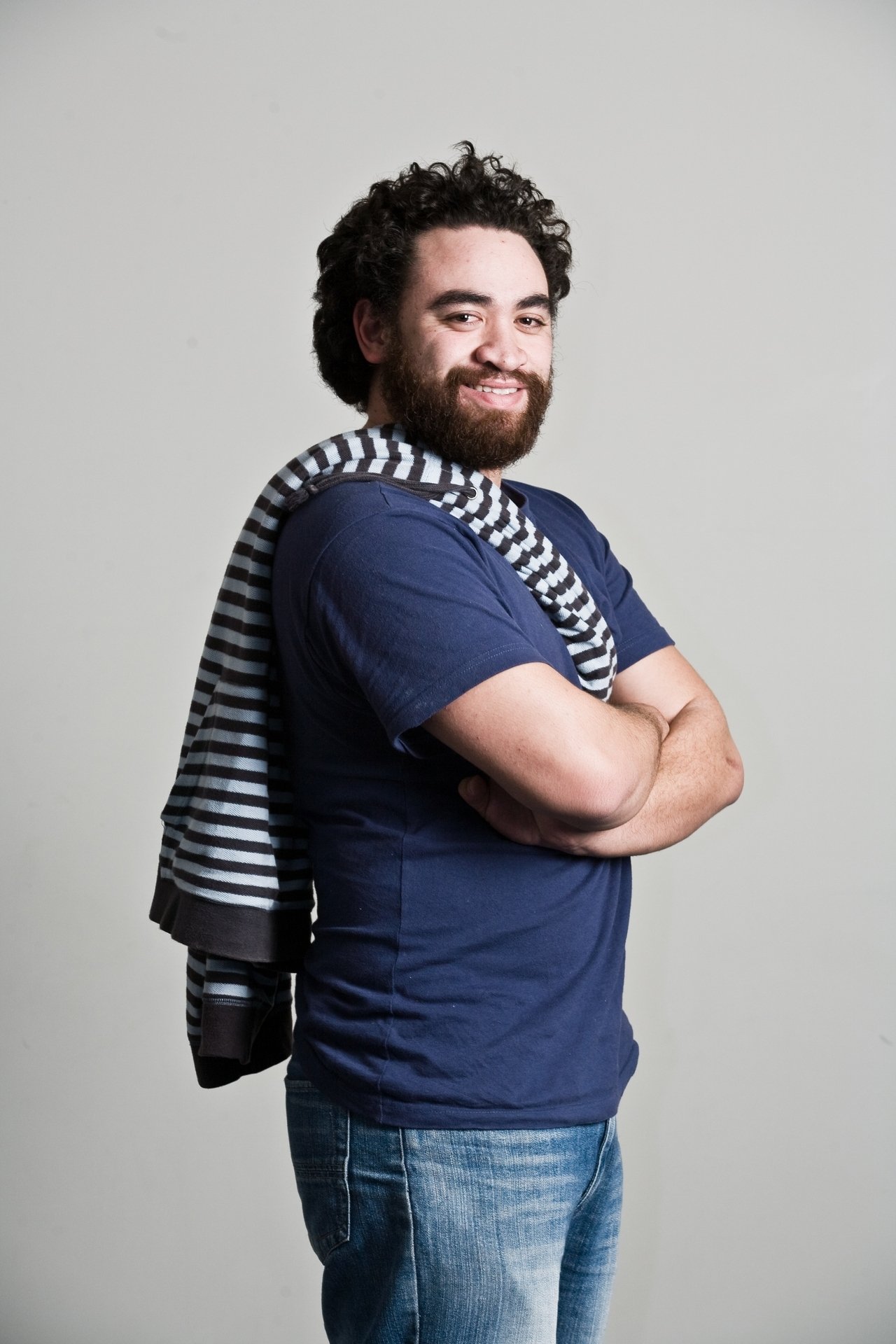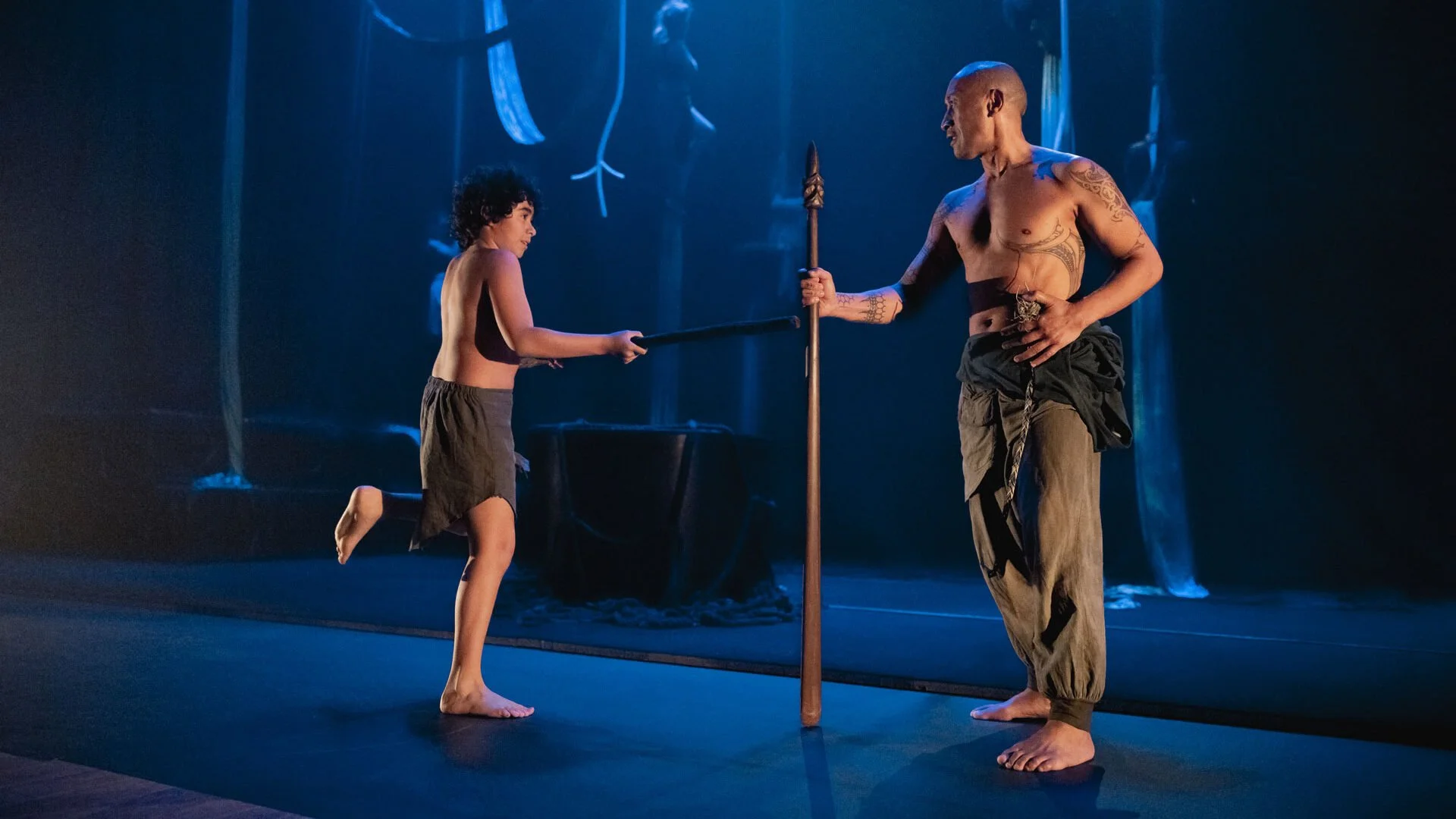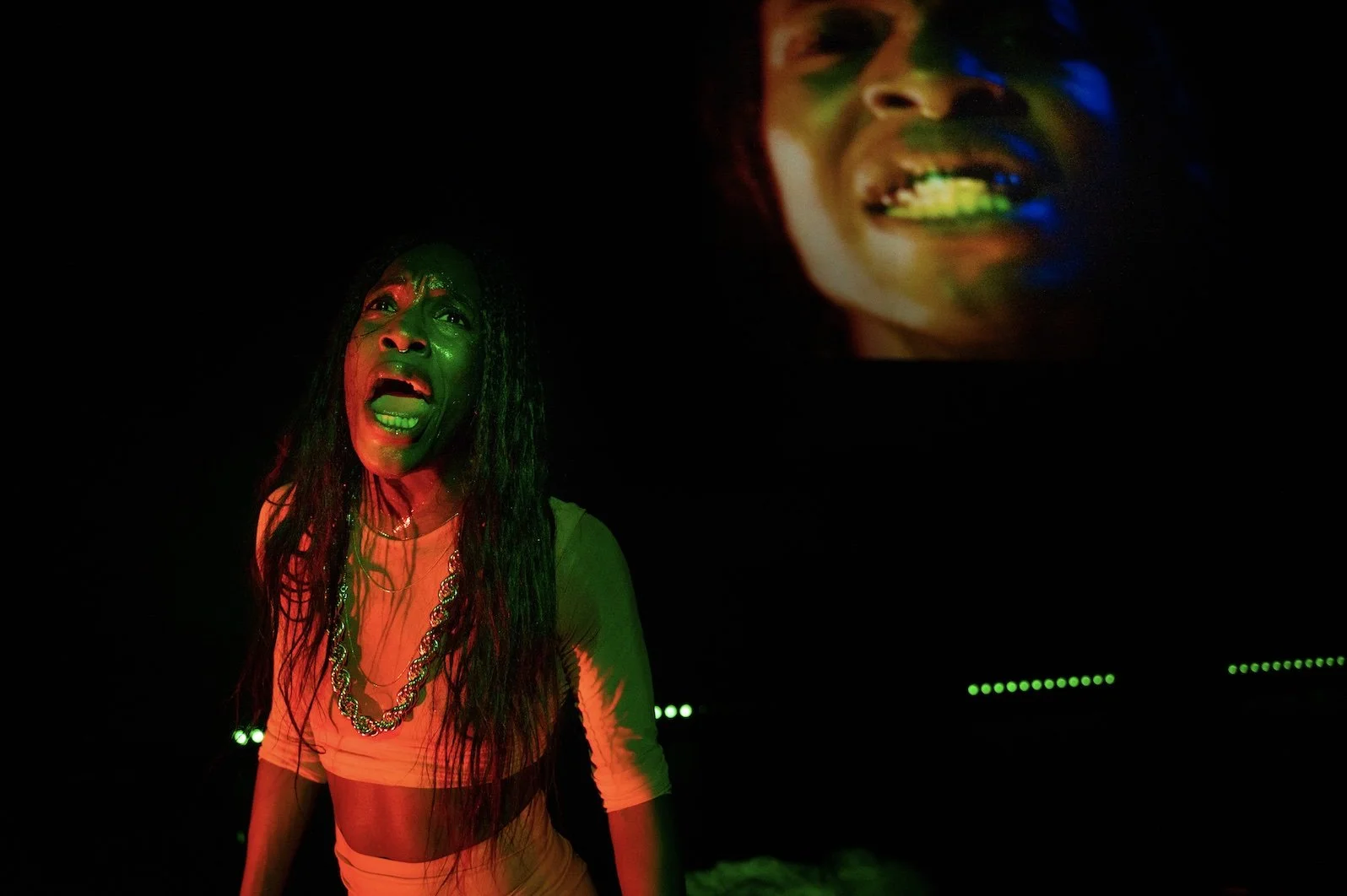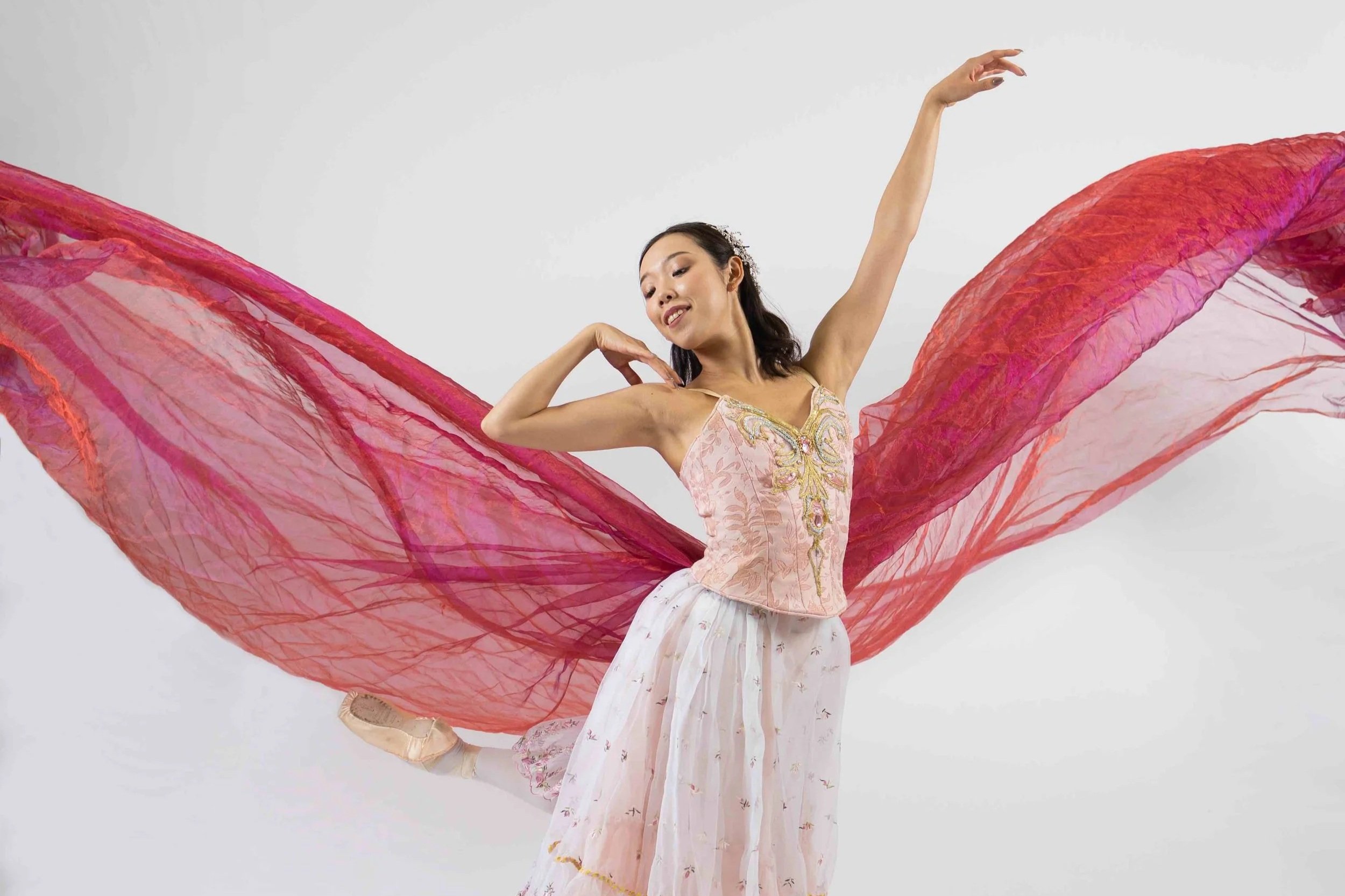Stir Q&A: Tainui Tukiwaho talks about Te Tangi a te Tūī's unique meld of Māori culture, dance, and circus arts
Director-cowriter reflects on the safe creative space in unique collaboration between New Zealand’s Te Rēhia Theatre Company and The Dust Palace
Tainui Tukiwaho.
Eve Gordon and Paku Fernandez in Te Tangi a te Tūī. Photo by Ben Sarten
The Cultch and Urban Ink present Te Tangi a te Tūī, a collaboration between Te Rēhia Theatre Company and The Dust Palace, at the York Theatre from October 19 to 29 with 2 pm and 7 pm showtimes
THE NATURAL WORLD of Aotearoa (New Zealand) is the backdrop for the magical Māori fusion of dance artistry, circus stunts, and impactful theatre that forms the basis of Te Tangi a te Tūī.
A collaboration between two Aotearoa-based organizations—renowned Māori artistic force Te Rēhia Theatre Company and contemporary circus specialists The Dust Palace—Te Tangi a te Tūī, which means “The Song of the Tūī”, is an allegory for the near-loss of te reo Māori (the Māori language) caused by colonialism.
Throughout the story, a mother and her son must contend with generations-old decisions that are impacting their ancestral lands. The production set in the ngāhere (forest) draws upon traditional mātauranga (knowledge) to weave together a multigenerational story of the Tūī (Indigenous songbird), which has lost its voice. The meaningful plot is told through stunning visuals, from acrobatics and aerial silk routines to a blend of cultural and contemporary dance techniques.
Te Tangi a te Tūī’s director Tainui Tukiwaho leads Te Rēhia Theatre Company alongside Amber Curreen. The pair are cowriters for the show, which was commissioned by The Cultch and Urban Ink. (Curreen also stars in the production.)
The thoughtful and deliberate making of Te Tangi a te Tūī was first explored in a documentary at the digital TRANSFORM Cabaret Festival this spring—and now the work comes to life on stage.
Stir connected with Tukiwaho ahead of the show’s world premiere to learn more about its creation.
When The Cultch and Urban Ink first reached out to commission a piece melding Te Rēhia Theatre Company’s stories of Māori tradition with the exhilarating circus style of The Dust Palace, what were your thoughts? How did the concept for Te Tangi a te Tūī develop from there?
This collaboration was born of an existing relationship between The Dust Palace and The Cultch—which is often how these things take life, and is a good process in which to grow Indigenous work in this day and age. There is safety to explore culturally when it is done in a proven safe place, which is a reason we at Te Rēhia work with The Dust Palace. It is a safe pākeha [New Zealanders of European descent] space for us to be ourselves.
Te Tangi a te Tūī. Photo by Lyndon Katene
What has it been like working in collaboration with The Dust Palace, and how have your different areas of expertise played off each other throughout the piece’s creation?
This question comes back to the power of relationships, or in my culture, I would use the word whānau. Often the word whānau would be translated to “family”, but the word “family” only scratches the surface of what whānau means in terms of relationships, trust, and care. Because we are whānau, the collaboration has been easeful. We share and grow together, guiding each other through our respective art forms. It has been wonderful.
Have you been involved in any other circus-theatre projects before—and if so, of what nature? How did creating Te Tangi a te Tūī differ from previous productions you’ve worked on?
I have worked with The Dust Palace once before on a circus work, The Odyssey. I did a lot of circus learning, but there was no space for my Indigenous framework and tools to come into play. This was fine for that project, but I felt the work missed out on a lot, because my cultural skills had no space—or desire—to come through. With Te Tangi a te Tūī, I can bring all my powers to the fore, which is really exciting.
With the story in Te Tangi a te Tūī told entirely in te reo Māori, is there a narration aspect to the piece, or are the performers acting while engaging in circus tricks? What kind of mix between circus stunts and theatrical storytelling can audiences expect?
Words cannot do justice to the wonderful spectacles our circus whānau are creating. Something to look out for that I have never seen before is circus, contemporary movement, and haka [ceremonial Māori war dance] all meeting on stage in battle.
The whole language experience for the audience in the theatre will be te reo Māori, except for the program. There is a radio-play version of the show that anyone who purchases a ticket can listen to, to hear the show in English. We have opted for this over surtitles, to try and keep the experience in the room as authentic as possible.
Considering the strong focus on Indigenous storytelling, land, and language throughout Te Tangi a te Tūī, what insights do you hope audiences might gain from watching this performance?
At the very least, I hope audiences will enjoy sitting in a totally immersive te Māori experience. I hope they enjoy all of the not-knowing, all of the cultural disconnection, and accept that ignorance is a great place to be. Through that, people who have never met our culture before may be open to receiving more.















